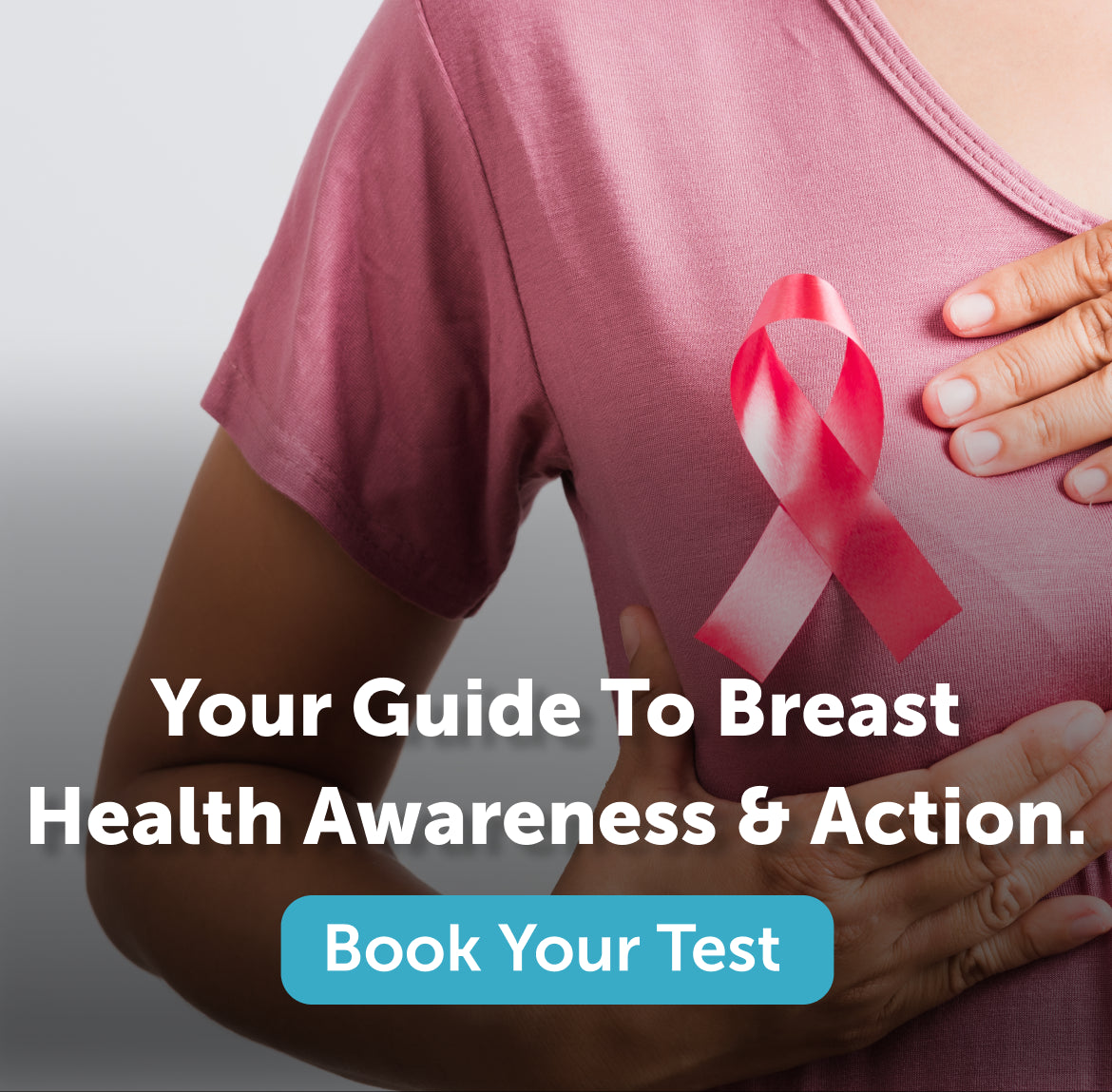What is Breast Cancer?
Breast cancer occurs when healthy breast cells begin to divide and multiply uncontrollably, forming a lump or mass known as a tumor. Understanding the type and stage of breast cancer is critical for timely diagnosis and treatment.
1. Non-Invasive Breast Cancer (Stage 0)
Cancer cells are confined to the ducts or lobules, and haven’t invaded nearby tissue.

2. Stage I
Small tumor, limited to the breast, minimal or no lymph node involvement.

3. Stage II
Larger tumor and/or more lymph node involvement, but still localized to the breast and axilla region.

4. Stage III
More extensive disease: tumor may have invaded chest wall or skin, increased lymph node involvement, but no distant metastasis.

5. Stage IV (Metastatic Breast Cancer)
Cancer has spread (metastasized) to distant organs, such as bones, lungs, liver, or brain.

Is Breast Cancer the Same for Everyone?
No. Breast cancer is categorized by how far it has spread. Here's how it differs:
1. Early-Stage Breast Cancer
This includes Stage 0 to IIA. The cancer is limited to the breast or nearby lymph nodes. It’s often treatable and may not show major symptoms.
2. Locally Advanced Breast Cancer
Stages IIB and III. Cancer has spread to nearby tissues or nodes but not beyond the breast region. Treatment may be more complex.
3. Metastatic Breast Cancer
Also known as Stage IV, this is when cancer has spread to other organs like the lungs, bones, or liver. It’s not curable, but it can be managed.
4. Advanced Breast Cancer
This refers to either inoperable locally advanced or metastatic cancer. It requires long-term care and personalized treatment plans.

Symptoms & Warning Signs
 Nipple Discharge
Nipple Discharge
 Lumping or Thickening
Lumping or Thickening
 Skin texture change
Skin texture change
 Armpit Pain
Armpit Pain
 Change in how the nipple looks
Change in how the nipple looks
 Visible Lump
Visible Lump
 Dimpling
Dimpling
 Pulled in Nipple
Pulled in Nipple
 Skin Irritation
Skin Irritation
 Skin Dimpling
Skin Dimpling
What Causes Breast Cancer & Who’s Affected

- Breast cancer begins when DNA in a breast cell mutates, triggering uncontrolled growth.
- There’s no single cause many risk factors contribute (gender, age, genes, hormones, lifestyle).
- Being female and older age are primary risk factors. Men can also get breast cancer (~1% of cases).
- Having a family history, or inherited mutations like BRCA 1/2, increases risk.
- Exposure to radiation, hormone therapy, or late menopause also play roles.
How is Breast Cancer Diagnosed?
Breast cancer diagnosis usually involves a combination of clinical examination, imaging tests, and tissue analysis. Each step helps confirm or rule out cancer and guides the best course of treatment.
1. Clinical Breast Examination
A doctor checks your breasts and lymph nodes, reviews your medical history, and may recommend blood tests. This is often the first step in identifying any changes.
2. Imaging Tests
- Mammography A low-dose X-ray captures breast tissue images to detect early changes not felt by hand.
- Ultrasound High-frequency sound waves create detailed images to determine if a lump is solid or fluid-filled.
- MRI (Magnetic Resonance Imaging) Uses magnetic fields and radio waves to create detailed internal images. Particularly useful for high-risk cases or when mammograms are inconclusive.
3. Biopsy
If cancer is suspected, a small sample of tissue is taken and analyzed.This step confirms diagnosis, identifies the type, grade, and hormone receptor status, and informs treatment decisions.
4. Cantel’s preRNA Test (Next-Gen Screening)
Cantel’s microRNA (preRNA) test is a non-invasive blood test designed to detect breast cancer at a molecular level, even in its earliest stages — before lumps or imaging changes appear.It complements existing diagnostic methods and empowers women with earlier, more accurate information for proactive treatment.
How Cantel Supports Better Decisions

- Early detection through our non-invasive microRNA-based screening enables doctors to plan treatments before symptoms worsen.
- Faster triaging of patients into the right care pathways — surgery, medications, or monitoring — depending on risk levels.
- Supports a multidisciplinary team, oncologists, surgeons, radiologists, and counselors, with actionable insights to make the best choice for you.
- Empowers you to take charge of your health with knowledge, clarity, and timely intervention.
What You’ll Learn:This video dives into the biology and evolution of breast cancer, how cells change over time, what triggers those changes, and what that means for prevention and treatment.
What You’ll Learn:Here, medical professionals break down advanced diagnostic and treatment approaches, especially for complex cases. Great to understand how care adapts across stages.
Key Takeaways
- Early Detection is Critical
Detecting breast cancer early increases survival rates, lowers treatment costs, and improves quality of life. Cantel’s preRNA test enables non-invasive,early-stage detection. - Breast Cancer Has Many Faces
It isn’t the same for everyone, it varies by stage and spread. From early (localized) to advanced (metastatic), knowing the stage guides better treatment. - Multiple Risk Factors Matter
Age, gender, family history, genetics (like BRCA mutations), and lifestyle factors all influence your chances. Awareness empowers prevention. - Treatment is Personalized
There is no one-size-fits-all approach. Treatment depends on your specific cancer type, biology, and stage, managed by a multidisciplinary team.

